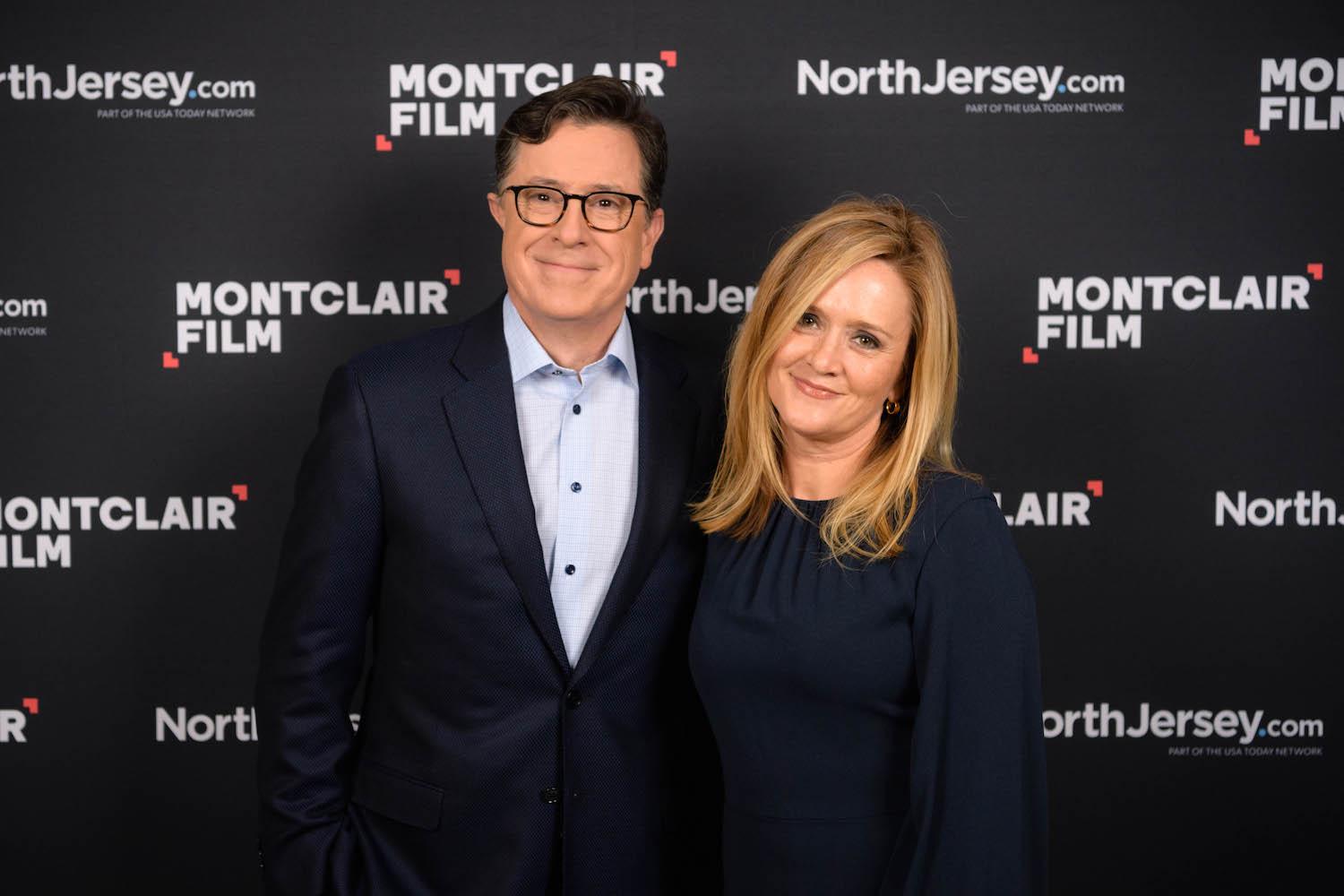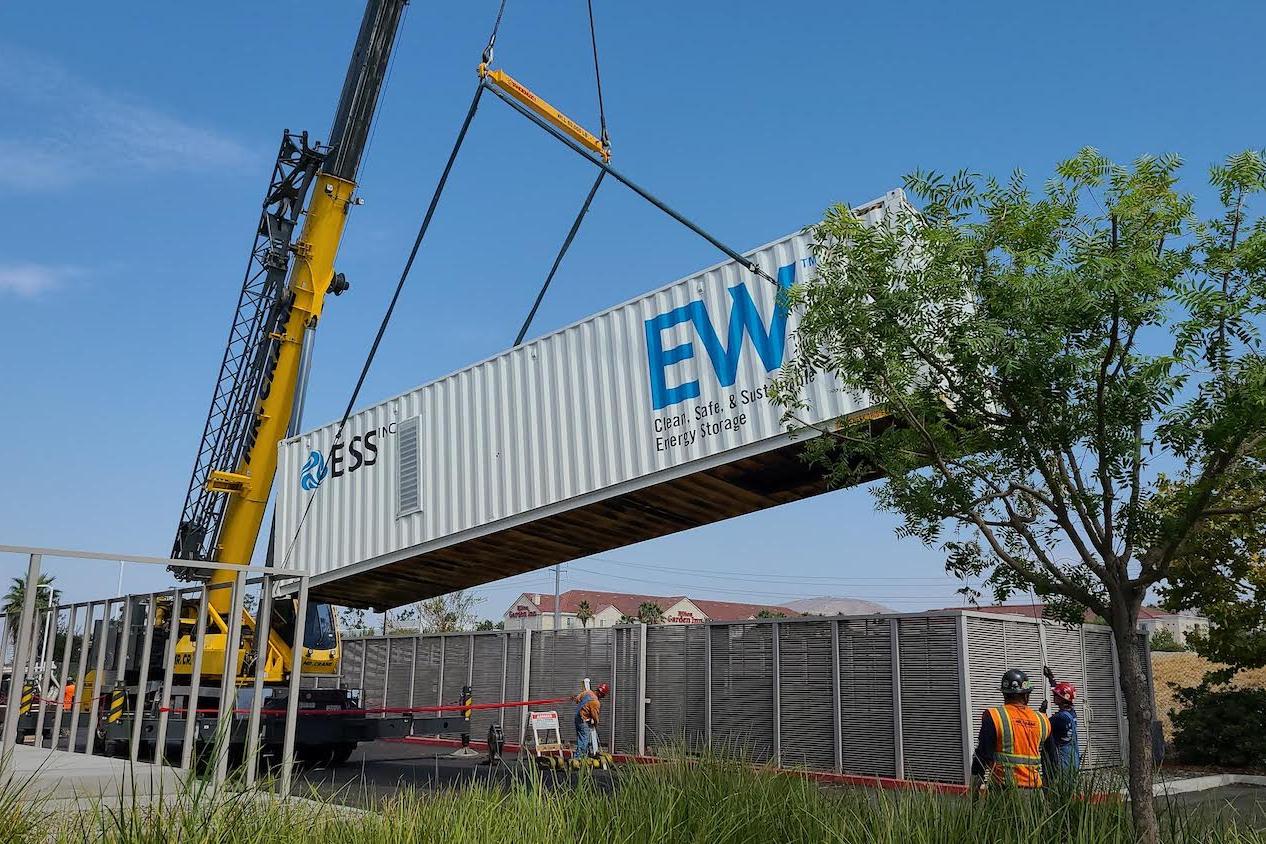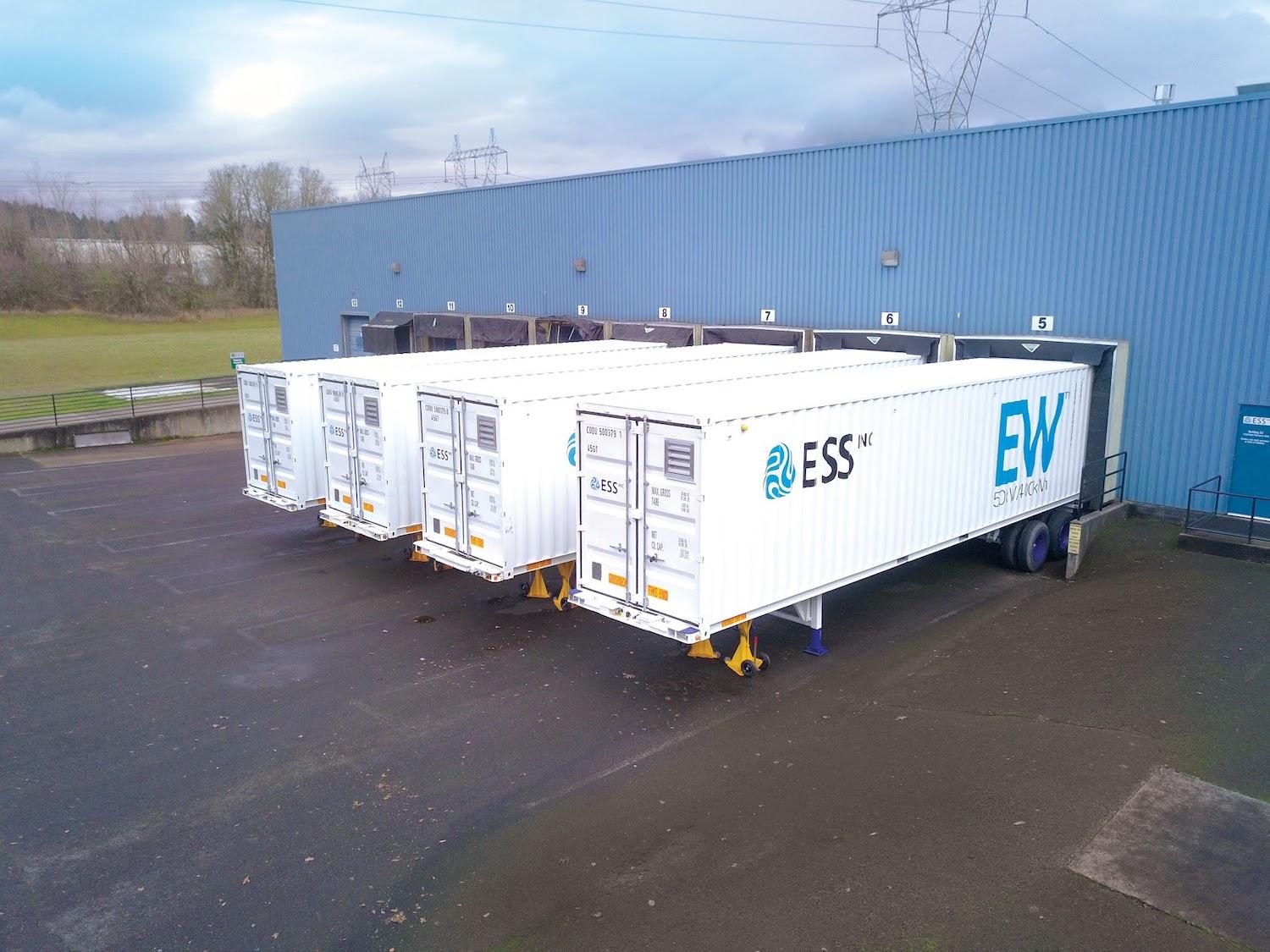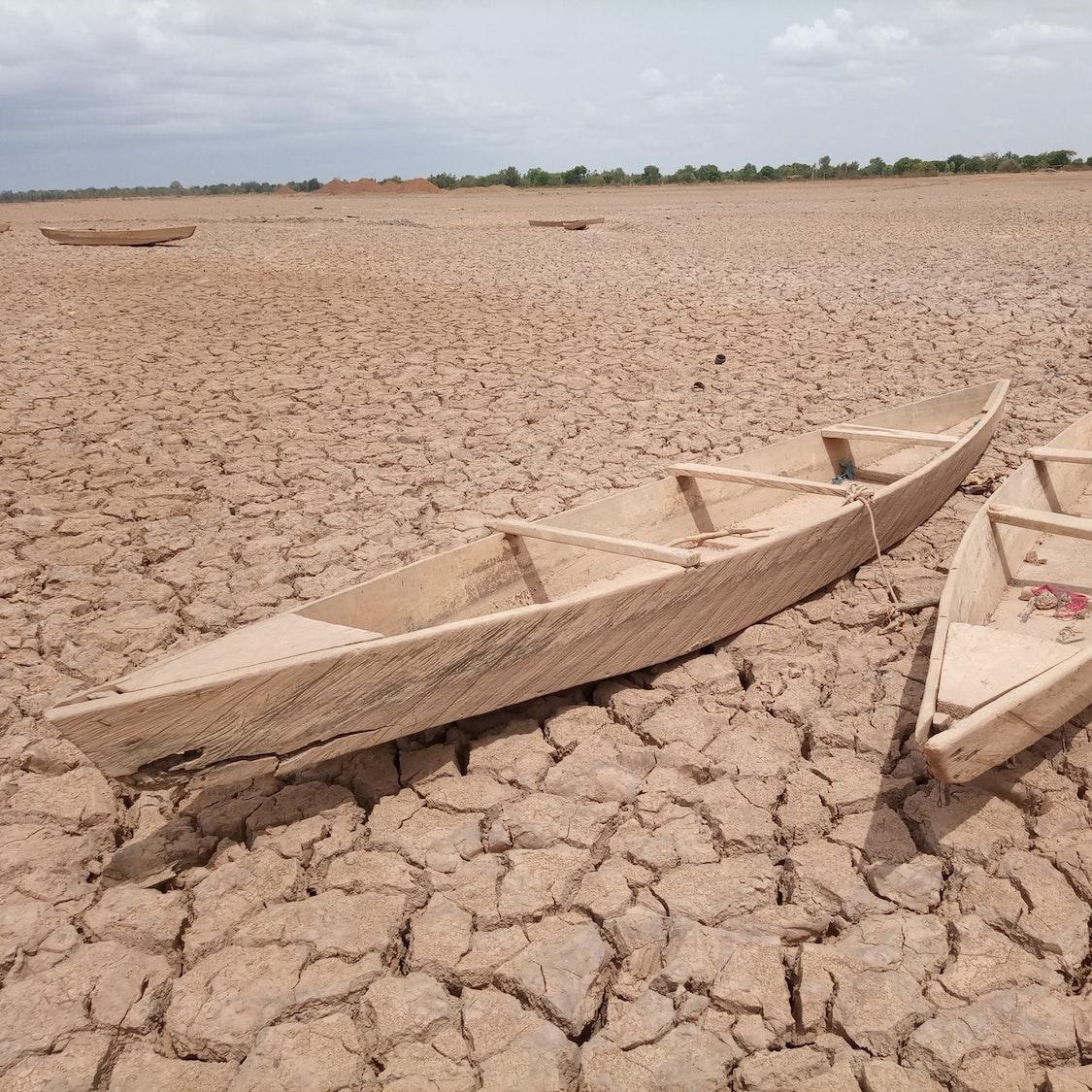Big Tech Claims to Care About Climate Action, So Why Don't They Lobby For It?


The top five U.S. tech companies have been getting high marks for helping to drive the market for renewable energy, clean vehicles, and other technologies aimed at cutting their carbon footprint. However, Big Tech's influence on climate action could be exponentially more significant if their lobbying dollars were a true reflection of their supposed concern for avoiding catastrophic global climate change.
The top five tech firms lead on climate action
A new report by the organization Influence Map provides some insight into the difference between climate lobbying activity by the “Big Five” tech companies — Apple, Microsoft, Facebook, Amazon and the Google umbrella firm Alphabet — and their public profile on climate action.
Collectively, these five firms have professed to care about climate change, and they've expressed that concern through various actions. For example, as a group they have exercised considerable influence on the renewable energy profile of the U.S.
As early adopters of new clean tech, the Big Five helped spark demand for clean power during the Obama administration. They also set the stage for costs to drop and growth to continue all through the Trump administration, despite the former president’s numerous attempts to pull back on climate action.
For example, Facebook announced a clean power plan for its data centers in 2011, when wind and solar power were still relatively expensive, partly in response to pressure from Greenpeace and others. Apple followed suit with a $3 billion commitment to solar power in 2015, and by 2016 Google had become the largest corporate buyer of renewable energy in the world.
Amazon also ranks high in terms of clean power buys, and Microsoft is another early clean power adopter, having joined Facebook in 2016 as a founding member of the Rocky Mountain Institute’s Renewable Energy Buyers Alliance. More recently, Microsoft has begun moving into the emerging green hydrogen field.
But big tech has an issue with climate change denial
On the other hand, the Big Five tech companies have also taken their share of hits over foot-dragging on climate action. Amazon is perhaps the best known example, having taken internal criticism from its own employees for providing a platform for climate change deniers through its book sales and for providing services to the fossil fuel industry through its Amazon Web Services branch.
Amazon is not the only one of the Big Five that has attracted media attention over its self-contradictory role in climate action. Facebook, for example, has also served as a powerful platform for amplifying fringe theories and misinformation aimed at muddling public opinion on climate action.
The new report from Influence Map assembles the Big Tech pieces into one big puzzle, and it’s not pretty.
“While Big Tech holds positive positions on climate policy, its support is not backed up by strategic advocacy. In addition, the companies' direct influence is overshadowed by the highly strategic and anti-climate advocacy of their industry associations in the U.S. and abroad,” Influence Map reported.
Influence Map points out that the Big Five have not changed their positions in 2021, even though President Joe Biden came into office with a substantial climate action agenda that is the polar opposite of former President Trump’s fossil-friendly energy policies.
“Following the inauguration of a new, climate-focused administration in the U.S., alongside new warnings from the IPCC and IEA on the need for drastic climate action, one might expect to see an increase in U.S. corporate climate policy engagement,” Influence Map noted.
Instead, the opposite has occurred. According to Influence Map’s "engagement intensity" analysis of lobbying activity, as a group the Big Five tech companies have reduced their climate lobbying this year, while lobbying by five oil industry leaders —ExxonMobil, Chevron, BP, Royal Dutch Shell (Shell) and ConocoPhillips — has risen.
“All five Big Oil companies lobbied on bills such as the CLEAN Future Act [which calls for a 50 percent reduction in U.S. emissions by 2050], where all five Big Tech companies were absent,” Influence Map reported. The oil industry’s lobbying power is aided by cross-sector alliances including the U.S. Chamber of Commerce, the National Association of Manufacturers and the Business Roundtable, the group found.
Faint bright spots in the Big Tech picture
Though Influence Map paints with a broad brush, its analysis does point out some nuances in the engagement intensity metric.
For example, Facebook and Apple increased their lobbying activity slightly in favor of climate policies, though it was not nearly enough to make up for more significant drops in activity by Microsoft, Google and Amazon.
Influence Map also points out that although Apple underperformed the other four companies on the metric, it did voice support for President Biden's proposed clean energy standards through its VP of environment, policy and social initiatives, Lisa Jackson.
Apple also took a significant action back in 2009 when it became the first of the Big Five to withdraw from the U.S. Chamber of Commerce over the organization’s climate change policies.
The move garnered praise from Greenpeace and others hoping for additional tech companies to follow suit, but so far none of the other four Big Tech firms have done so. In 2010 Microsoft issued a statement distancing itself from the Chamber’s position on climate change, but stopped short of leaving the organization.
What’s next for Big Tech
The Influence Map report helps shed some light on a problem with Democratic Party unity that some observers of Congress have been struggling to explain. Democrats have a majority in both the House and Senate, but the party needs all 50 Democratic senators in Congress to unite for votes, with Vice President Kamala Harris providing the tie-breaker.
That appears to be all but impossible, thanks to two holdouts whose motives have remained mysterious to some: Sen. Joe Manchin of West Virginia and Sen. Kyrsten Sinema of Arizona.
Manchin’s motivation has been clarified in recent weeks as allegations surfaced of his ties to the fossil energy industry, particularly ExxonMobil. Coincidentally, Influence Map notes that ExxonMobil has increased its climate-related spending since January, including a spike in activity after the reconciliation bill was introduced by Democrats last month.
“Since the announcement of the reconciliation bill on the 9th of August 2021, ExxonMobil has spent $1.1 million on Facebook political and issue ads in the U.S. These ads have gained over 21 million impressions,” Influence Map reported.
An analysis by Oil Change U.S. last summer also linked Sen. Sinema to financial support from ExxonMobil, along with Manchin and several other Democratic senators.
If Big Tech really wants to get serious about climate action, putting their lobbying dollars to work for President Biden’s climate policies would be a good place to start.
Image credit: Nadine Shaabana/Unsplash
Late-Night Television Hosts Bring Some Levity to Climate Week


Late-night hosts Stephen Colbert and Samantha Bee. (Image credit: Neil Grabowsky / Montclair Film via Wikimedia Commons)
As heads of state, business leaders and civil society organizers come together for Climate Week in New York, late-night television hosts have their own idea for pushing climate action forward. Some of the top late-night hosts on television, including Stephen Colbert, Trevor Noah and Seth Meyers, will devote their shows to discussing climate change on Wednesday, Sept. 22.
The shows participating in the cross-network Climate Night are: “The Late Show With Stephen Colbert” and “The Late Late Show With James Corden” on CBS, "The Tonight Show Starring Jimmy Fallon” and “Late Night With Seth Meyers” on NBC, “Full Frontal With Samantha Bee” on TBS, “Jimmy Kimmel Live” on ABC, and “The Daily Show With Trevor Noah” on Comedy Central, the New York Times reports.
Each will plan their own original programming focused on climate change and look to bring some humor to the conversation while building awareness among the public.
Late-night hosts add some humor to Climate Week while building awareness for action
Although scientists agree we still have time to avoid the worst impacts if we act quickly, conversations about the climate crisis often devolve into a laundry list of reasons why the world is coming to an end.
Understandably, the doom and gloom takes its toll: People around the world are increasingly worried about the impacts climate change will have on their own lives, and psychologists are already reporting a link between concern about climate change and mental health issues, particularly in young people.
Those looking for some levity in the Climate Week news cycle may find this push from late-night hosts is just what the doctor ordered.
The event is the brainchild of Steve Bodow, a former showrunner at “The Daily Show” and Netflix’s “Patriot Act With Hasan Minhaj.” Bodow told the New York Times the event was organized to coincide with Climate Week and call attention to the subject by having late-night shows from across networks focus on it simultaneously.
“Climate change, obviously, is something we’re all dealing with,” he told the Times. “We’re all talking about it. We all need to be talking about it. What if these shows all talked about it at once? It makes a statement that they’re all willing to do this.”
While the impacts of climate change are surely no laughing matter, the concept was developed intentionally to bring some much-needed levity to a serious conversation while sharing information some viewers didn't have before. "Comedy is a great delivery system for actual information,” comedian Samantha Bee of “Full Frontal" told the Times.
The bottom line: More awareness of climate change is always a good thing
Despite the urgency of the climate crisis, it is notoriously under-covered by mainstream media. Broadcast television nightly news and Sunday shows covered climate change for a total of 112 minutes in all of 2020, while morning news programs aired a combined 267 minutes of climate coverage last year, according to the nonprofit media watchdog Media Matters for America.
With that perspective, this event from late-night hosts — which amounts to about 280 minutes of climate programming in a single night — is actually a pretty big deal. And given the influence these stars have on American life, their move to come together to build the conversation around climate action has the potential for outsized impact.
"Late-night hosts reflect our national conversation even more than Russian Twitter bots set it," Bodow told CNN. "So this incredible group of shows coming together makes a statement about the scale and urgency of the world's hottest problem."
TriplePundit is tracking topics like this during Climate Week and in the lead-up to COP26 in Glasgow. Sign up for our daily newsletter to get the latest directly in your inbox.
Image credit: Neil Grabowsky / Montclair Film via Wikimedia Commons
Climate Week Kicks Off With More Urgent Calls For Action: 'This Week is About Getting It Done'


Climate Week kicked off in New York City on Monday with more calls for urgent action to reduce greenhouse gas emissions and avert the worst impacts of the climate crisis.
"This week is about getting it done," said Helen Clarkson, CEO of the Climate Group, which hosts and organizes Climate Week. In case you missed it, here are some of the top insights from organizers as they got the week of conversation started.
A clarion call from Climate Week: The time to act is now
Last year Clarkson leveraged her opening remarks at Climate Week to look at 2020 in review in light of the coronavirus pandemic, another record year of extreme weather conditions, and the role of the climate community in "standing strong and supporting each other."
"It’s awful that I could give exactly the same speech here today," Clarkson said in New York on Monday. "Despite the best intentions of our global leaders, COVID-19 is still shaping our lives. Despite the clearest blueprints for action from campaigners and scientists, the fires and floods are raging on. And despite how hard we’ve all worked in the last few years to get where we are, we know there’s a lot more work to do."
Don't despair: There's still reason to be optimistic about climate action
The latest report from the Intergovernmental Panel on Climate Change (IPCC) indicates the world is essentially locked in to at least 1.5 degrees Celsius of warming above pre-industrial levels. Our warming climate is already causing "widespread and rapid changes," the IPCC warns, and human activity — specifically carbon emissions from the burning of fossil fuels — is “unequivocally” to blame.
The findings are troubling, to say the least, but IPCC scientists are quick to note we still have time to avert the worst impacts of climate change if we take bold, immediate steps to reduce emissions. It's up to each of us to ensure that we don't allow despondence to become a trap or an excuse for not taking action.
"The main message is simple and sobering: Climate change is man-made," Dr. Ursula von der Leyen, president of the European Commission, said of the report in her opening remarks at Climate Week. "But the good news in it is we can do something about it. Our action matters."
"As exhausting as all of this sounds, I still think we can be optimistic about our ability to get it done," added Clarkson of the Climate Group. "For a long time in the climate space, there has been little consensus, even less political will and almost no money. But the world has changed. We’ve hit the public consciousness. Powerful people are now using our language — climate change, climate crisis, climate action — and it’s great to hear. But the question now is how do we turn this talk into the action we’ve promised."
She called on business leaders, policymakers and NGO heads to look at Climate Week as an opportunity to learn, rather than simply another avenue to promote their own work. "We all need to do more," she said. "It can be all too easy just to show up, show your work, say what you want to say, but we all need to be receiving as much as we’re transmitting. It’s clear that however much we’ve all done, we’re all still at the starting line."
It's not enough to set goals for 2030 or 2050: "This is your problem"
"As Greta Thunberg and other activists keep saying to us: 'Stop telling us about 2050. Tell us about now,'" Clarkson continued. "The message is really clear: 2030 and 2050 targets are necessary, but they are not sufficient. We don’t just want commitments and plans. We need delivery and action."
The Climate Group convenes major businesses into networks that look to decarbonize the economy — including the RE100, a coalition of businesses committed to source 100 percent renewable energy, and the EV100, made up of companies committed to accelerating the transition to electric vehicles.
These efforts are laudable and do make an impact, but they aren't enough on their own, Clarkson said. "It’s not enough to just join one initiative. We all need to create a world which has climate at the center," she said. "There’s no such thing as a climate department of a business or government. It needs to be a climate business or a climate government, or an obsolete one."
Clarkson is saying what's on many a sustainability professional's mind during Climate Week, which has served as the launching pad for countless corporate and public-private coalitions aimed at combating climate change, many of which are now dormant or defunct. And her tone set a decidedly high bar for the week: "This is your problem, not your successor’s," she told leaders plainly. "There’s no time for one last fossil fuel investment. You don’t get one last coal mine."
What happens this week could help shape COP26 in Glasgow
By design, Climate Week is meant to stir up conversation about the climate crisis as the United Nations General Assembly convenes in New York and leaders prepare for the U.N.'s annual climate conference, this year scheduled for November in Glasgow, Scotland.
This year is no different, as advocates put pressure on heads of state to increase the ambition of their commitments to the Paris Agreement ahead of the COP26 climate talks.
"All eyes are on Glasgow," Clarkson said, and world leaders aren't the only ones with a role to play. "In a few weeks, the climate community will hold national governments to account and will challenge them to be bigger and bolder and make equitable changes more quickly ... But we know governments need our support and our actions to make those commitments, and we all need to show them that they can make bold promises and we will work alongside them to get it done."
"This is a week for all of us — businesses, government leaders, civil society and NGOs — to showcase how we’re doing just that," she concluded. "We’ve got to hold ourselves to account so that we can ask the same of others."
TriplePundit is tracking topics like this during Climate Week and in the lead-up to COP26 in Glasgow. Sign up for our daily newsletter to get the latest directly in your inbox.
Image credit: Mika Baumeister/Unsplash
Long-Duration Energy Storage: The Catalyst for a Sustainable Energy Future


ESS Inc. is one company working on flow batteries for long-duration energy storage.
New energy storage technologies are surging into the market, as business leaders and policymakers seek to address climate change, support renewable energy, and create a more reliable and resilient grid. However, not all energy storage solutions are the same. The global economy faces multiple challenges in addition to climate change. To foster long-term sustainability at a holistic level, energy storage should support reliability and security while benefitting people and the planet, including historically disadvantaged communities.
Why energy storage matters
The technology behind wind turbines and solar panels is now more efficient and economically competitive than ever before, but nothing can change the essential nature of wind and solar power.
Wind speeds vary by the hour, day and season. Sunlight is absent all night, and cloudy weather can cut into solar panel performance during the day.
That’s where energy storage comes into play. Batteries can store enough electricity to fill the gaps when the output from wind turbines and solar panels shrinks.
Businesses can use energy storage to absorb excess wind or solar energy during low demand periods and discharge it strategically to avoid peak demand charges. They can also use energy storage in place of diesel or gas generators for emergency backup power and avoid longer outages with solar-plus-storage microgrids.
On a broader planning level, large-scale energy storage can be deployed to avoid costly new transmission infrastructure and peaker plants, supporting economic growth and better health outcomes in remote or underserved areas.
In addition to its bottom-line benefits, energy storage enhances a company’s reputation. Many businesses already pitch in with supplies and resources when emergencies strike their area. Onsite energy storage could enable them to add electricity to the list, without the noise and pollution associated with fossil-fueled emergency generators.
Beyond lithium-ion batteries
Lithium-ion is today’s most common energy storage technology. Once confined to cell phones, laptops and other portable rechargeable devices, lithium-ion batteries are now the technology of choice for most electric vehicle manufacturers.
Interest is also growing in expanding the use of lithium-ion batteries to store electricity for use onsite at buildings and industrial facilities, and to store and return power to the electric grid.
Here, however, a key shortcoming arises. Lithium-ion batteries only last a few hours. That can be sufficient in some circumstances, especially when combined with smart grid technology. But the four-hour limitation typical of conventional lithium-ion technology falls short in other cases. Longer-lasting batteries, with a duration of 10 hours or more, are needed to achieve a highly decarbonized electric grid that is resilient, reliable and stable.
In the energy storage field, water reigns supreme. Despite rapid growth in lithium-ion batteries, pumped hydropower reservoirs still account for 97 percent of large-scale energy storage in the U.S. According to the U.S. Energy Information Administration (EIA), the average hydropower facility stores about 500 megawatts of zero-emissions electricity for six to 20 hours, safely and securely, without fear of fire, toxic chemicals or end-of-life hazardous waste issues.
But hydro isn’t expected to be a large part of the energy storage solution going forward. The water resources needed for hydropower plants are geographically limited and the deployment timeline is many years. New project development is further curtailed by wildlife and habitat conservation concerns, as well as competing interests including river-based transportation, fisheries, recreation, and the rights of Native Americans. So the need for a breakthrough is clear.
In addition, the U.S. Department of Energy, grid planners and other stakeholders are coalescing around the idea that the future grid will not rely as heavily on large, centralized power plants, whether fueled by water or by fossil resources.
Instead, distributed energy resources, including rooftop solar arrays and small wind turbines, will play a more prominent role. To adapt to the grid of the future, long-duration energy storage technology must be scalable and flexible enough to be located just about anywhere.
The search for sustainable long-duration energy storage
Long-duration energy storage is a critical feature of the Energy Department’s plans for integrating more wind and solar onto the grid without sacrificing reliability and stability. Having recognized the four-hour limitation of conventional lithium-ion technology, the Energy Department defines long-duration energy storage as a device or system that can generate electricity for at least 10 hours, and preferably for multiple days lasting 100 hours or more.
The recently passed Senate infrastructure bill supports the Energy Department’s efforts in this area by including billions in funding for long-duration energy storage projects and domestic supply chain stimulus programs.
It is possible to link sets of lithium-ion battery arrays in a sequence that lasts longer than four hours. But the cost of such a system is often prohibitive, especially if the goal is to maintain power for multiple days.
In addition, the environmental and social impacts of over-reliance on lithium technology are beginning to come into view, and the picture is not pretty.
While the U.S. has large deposits of lithium to exploit, fossil energy stakeholders are among those pointing out that the local environmental impacts of lithium extraction and refining share characteristics with the impacts of coal, oil and gas operations.
Along with environmental and public health impacts, lithium mining can raise significant social, cultural and human rights issues. In the U.S., most lithium reserves are concentrated in western states, where the once-dormant domestic lithium mining industry has become a hotbed of activity, triggering new concerns over water resources and the use of public lands.
Native Americans in Nevada, for example, have allied with ranchers and conservationists to stave off at least one new lithium mine that was approved on federal land during the Trump administration. The impact of lithium mining on indigenous communities in other countries has also drawn media attention.
Researchers are working on lithium recovery methods that involve less surface destruction and eliminate the need for large evaporation ponds. However, the use of toxic substances in the refining process is an issue that has yet to be resolved, and disposing vast quantities of waste brine could raise issues similar to the notorious problem of fracking waste disposal.
The skyrocketing demand for lithium shows no sign of slowing down, as the growing number of stationary battery arrays competes for raw material resources with countless electronic devices. With millions of electric vehicles set to roll off assembly lines in the near future, both supply and end-of-life issues appear likely to increase.
More options for sustainable energy storage
A growing number of more sustainable long-duration energy storage options are on the horizon. One approach uses heavy blocks to substitute for water and hydropower turbines. When renewable energy is available, electric motors raise the blocks to the top of a tower. When more electricity is needed, gravity takes over. The blocks are allowed to fall gradually back down, and they generate electricity along the way.
The blocks themselves can be made of any material with optimal mass. That opens the door to new opportunities for recycling wind turbine blades and other materials that support the renewable energy transition.
Such recycling would represent a key advantage over lithium-ion technology. While lithium-ion batteries can be recycled, few if any recycling facilities exist today on a scale large enough to take in the quantities of spent batteries that will populate the globe in only a few years. And while scaling up the global lithium recycling industry is possible, it would involve additional environmental impacts related to transportation emissions and facility operations. It would also add new burdens to oversight of illegal recycling operations, which is already strained to the hilt by the global plastics crisis.
In terms of lifecycle sustainability, gravity-based energy storage is a better fit for the circular economy of the future. However, its application is limited to sites with sufficient space, and it is subject to zoning restrictions, competing uses, and aesthetic considerations due to the height of the towers.
Site limitations also come into play for other long-duration energy storage technologies that are beginning to emerge at the pilot and demonstration stage, such as compressed air systems.
In terms of a sustainable solution that can fit almost any use case, what is really needed is a sort of hydropower dam in a box – meaning a relatively compact system that uses little or no toxic chemicals, maximizes compatibility with the circular economy, and can store and deliver electricity for 10 hours or more.
Flow batteries are one such option. As the name suggests, flow batteries deploy two types of specially treated electrolyte to generate and store electricity. The electrical charge occurs when the electrolyte, pumped by electricity from the grid or a paired generator, flows across a membrane. When ions cross the membrane in one direction, the battery charges; when they cross in the other, the battery discharges.
Researchers have been perfecting flow batteries since the science was first confirmed in the 1970s. Only in recent years have flow batteries finally begun to cross the chasm separating promising laboratory technologies from successful commercial deployment. And today, the decades-long promise of long-duration, low-impact, and low-cost energy storage with flow batteries is finally upon us.
ESS Inc., based near Portland, Oregon, is one company that has been working on flow batteries for a decade and is now poised to shake up the storage sector. Founded in 2011, a year later ESS was awarded an Energy Department grant for its flow battery design that met the agency’s exacting standards for both cost and efficiency.
That initial investment and subsequent other funding have paid off. After years of development, the company has devised a safe, reliable new flow battery that delivers on duration and sustainability as well as cost and efficiency, with an electrolyte that uses earth-abundant iron, salt and water to generate and store electricity.
In the coming months, in partnership with ESS, we’ll take a closer look at emerging energy storage solutions in general — and flow batteries in particular — and the role they play in a clean energy future. You can follow along with the series here.
This article series is sponsored by ESS, Inc. and produced by the TriplePundit editorial team.
Image courtesy of ESS, Inc.
U.S. Congress Adds Fresh Ammunition to Corporate Climate Fight


Some leading U.S. corporations have been striving to reduce their carbon emissions, only to run up against obstacles posed by an economy that still depends heavily on fossil fuels. Now it appears they have gained a new weapon in the fight, one that could enable them to rally more public pressure in support of dramatic federal action on climate change.
Moving the needle on climate action
Public awareness about climate science is growing, but translating public opinion into federal policy remains a challenge. The political divide has intensified even further this year as Republican legislators focus on base issues fraught with emotion, including transgender rights, COVID-19 response, diversity training and women’s reproductive health, among others.
Nevertheless, Democrats do hold a slim majority in Congress, and they have just launched a public relations campaign aimed at forcing the hand of legislators who oppose climate action.
It started last week, when the Democrat-controlled Oversight and Reform Committee in the House of Representatives issued a press release and public documents that detail how fossil fuel stakeholders have waged a decades-long climate change disinformation campaign. Cosigned with the House Subcommittee on the Environment, the press release also makes the case for a widespread, rapid shift to sustainable energy throughout the U.S. economy.
The release describes letters sent by the Committee to executives at the U.S. arms of ExxonMobil, BP, Chevron and Shell, as well as the U.S. Chamber of Commerce and the American Petroleum Institute (API), a trade association for the oil and gas industry. The letters call the executives to testify before the Committee on the “reported role of the fossil fuel industry in a long-running, industry-wide campaign to spread disinformation about the role of fossil fuels in causing global warming.”
The testimony is scheduled for October 28. The Committee expects the oil companies, along with the Chamber of Commerce and API, to turn over documents and communications “related to their organization’s role in supporting disinformation and misleading the public to prevent action on the climate crisis” by September 30.
Oversight Committee pulls the greenwash rug out from under oil companies
Ahead of the testimony and release of documents, the Oversight Committee has already laid the groundwork for a public relations campaign of its own.
The announcement appears deliberately designed to influence public opinion well in advance of the October 28 hearing. It pulls attention away from oil companies’ recent investments in clean technology to focus on the overwhelming weight of their past and current practices.
“We are deeply concerned that the fossil fuel industry has reaped massive profits for decades while contributing to climate change that is devastating American communities, costing taxpayers billions of dollars, and ravaging the natural world,” the Oversight Committee stated. “We are also concerned that to protect those profits, the industry has reportedly led a coordinated effort to spread disinformation to mislead the public and prevent crucial action to address climate change.”
Congress clears up the record on climate disinformation
To further cement its case in the court of public opinion, the Oversight Committee’s press release included links to the individual letters sent to each of the companies, and to the Chamber of Commerce and API. Each letter provides a detailed, footnoted record of how the recipient's actions were reportedly linked to climate change disinformation.
The letter to ExxonMobil CEO Darren Woods, for example, cites reports going back to 1977 describing how the company was warned about the link between fossil fuels and climate change. By the 1980s, the American Petroleum Institute and several of its members were discussing pathways to reduce emissions. However, by the end of the 1990s, the industry position shifted into an aggressively defensive stance.
“A 1998 memorandum developed with input from representatives of Chevon, ExxonMobil, API, and other industry-funded front groups detailed plans for a coordinated disinformation campaign targeting the media, the public, and policymakers,” the Committee wrote to Mr. Woods.
“In discussing actions around climate policy, the memorandum declared, ‘victory will be achieved…when ‘recognition of uncertainties becomes part of the ‘conventional wisdom,’” the Oversight Committee added.
The Oversight Committee also provided evidence that links intensive lobbying by oil companies and their allies with the decision to pull the U.S. out of the Kyoto Protocol on climate change in 2001, along with other climate disinformation actions leading up to the present day.
The letter concludes by emphasizing that Congress is considering “wide-ranging climate-change legislation” in support of President Joe Biden’s American Jobs Plan, which would propel the U.S. more swiftly into a decarbonized future.
U.S. corporations can fill in the climate action blanks
In effect, the Oversight Committee has put the climate action ball in play for U.S. business leaders to pick up.
Significant corporate support for the American Jobs Plan has yet to materialize, but corporate leaders have already voiced their support for climate action.
Last spring, for example, the We Mean Business Coalition and the green investor group Ceres issued an open letter on climate action to President Biden. The letter calls for reducing greenhouse gas emissions in the U.S. to 50 percent below 2005 levels by 2030, as a stepping stone to zero emissions by 2050.
In addition to several pension funds and other powerful investors, those signing on include some of the most well known names in U.S. business. Topping the list are Ford Motor Co., General Motors, General Electric, Johnson & Johnson, Pfizer, Amazon, Apple, Facebook, Google, Microsoft, Salesforce, Siemens, Coca-Cola, Hershey, Kellogg Co., Mars, McDonald’s, Starbucks, Unilever, Best Buy, Gap Inc., Ikea, Levi Strauss & Co., Nike, Target and many others.
So far those efforts have fallen flat, as U.S. Senator Joe Manchin (D-W.Va.) and a small number of other Democratic legislators have joined a solid wall of Republican opposition to climate action.
Now the Oversight Committee has just handed fresh ammunition to corporate climate leaders on a silver platter. Whether they use it to help influence voters or not, the choice is theirs.
Image credit: Melissa Bradley/Unsplash
Shifting Agricultural Subsidies Could Help Achieve the SDGs, Report Finds


“End poverty in all its forms everywhere.” “Ensure gender equality and empower all women and girls.” “Ensure sustainable consumption and production patterns.” These are a few of the aspirations member states are targeting by 2030 through the United Nations’ 17 Sustainable Development Goals (SDGs). Recent reports from the U.N., however, beg the question: Was 2030 a pipe dream?
Take Goal 13, which focuses on combating climate change: The report issued by the Intergovernmental Panel on Climate Change (IPCC) last month raised thousands of pages of red flags about our progress. Another report from the U.N. published this month puts the spotlight on the SDGs yet again. The U.N. Food and Agriculture Organization, U.N. Development Program and U.N. Environment Program open a report about food systems by stating: “With eight years remaining, we are falling far short of the trajectory needed to achieve the Sustainable Development Goals.” Authors cite speed and comprehensiveness as needed but lacking.
In calling out lack of speedy and comprehensive action to reshape food systems in support of the SDGs, the U.N. agencies take aim at agricultural subsidies in particular.
"Current support to agricultural producers worldwide works against the attainment of the SDGs, the targets of the Paris Agreement and our common future,” the report’s forward reads. “This support is biased towards measures that are harmful and unsustainable for nature, climate, nutrition and health, while disadvantaging women and other smallholder farmers in the sector."
Agricultural subsidies are important: Redirect them in support of the SDGs
Assessing support for agricultural producers in 88 nations, the U.N. report places global agricultural subsidies at $540 billion a year, or 15 percent of total agricultural production value. The agencies contend that over two-thirds of this support is “price-distorting and largely harmful to the environment.” They estimate the value of these subsidies could increase to $1.8 trillion a year by 2030.
Sugar, beef, milk and rice are some of the most subsidized commodities in the world, the report outlines — and all of these products are either nutrient-poor or carbon-intensive, if not both. Authors calculate that eliminating agricultural subsidies entirely could mean avoiding 11.3 million tons of carbon equivalent emissions by 2030, but they warn that the costs to farmer incomes and food prices would only exacerbate poverty and undernourishment — essentially supporting one SDG while sacrificing many others.
In short: Governments need to redirect financial assistance — and the U.N. report outlines six steps to do it. These include: estimate the support already provided to agricultural producers, identify and estimate the impact of this support, design an approach and reforms to repurpose support in more productive directions, estimate the impact of the new strategy, review and refine the strategy, implement it, and monitor outcomes.
The action items the U.N. agencies pose for governments underscore that simply eliminating agricultural subsidies won't work. Funds must be redirected for governments to reap the benefits and for sustainable agricultural systems, such as regenerative agriculture, to grow.
Repurposing agricultural support “can improve both productivity and environmental outcomes,” said Achim Steiner, administrator of the U.N. Development Program (UNDP), in a recent statement outlining the economic benefit of actually following through with the U.N.'s recommendations. This change “will also boost the livelihoods of the 500 million smallholder farmers worldwide, many of them women, by ensuring a more level playing field,” he said.
While strategies must be country-specific, the U.N. also emphasizes that global coordination is needed, if only to standardize the monitoring and reporting of financial support. A good place to begin international cooperation? The report points to the U.N. Food Systems Summit, taking place on Thursday as part of Climate Week, and recommends that repurposing agricultural support be placed at the top of the agenda.
Image credit: Roman Synkevych/Unpslash
Climate Change is Fueling a Wave of Migration, Study Finds


Historic droughts across North and West Africa in 2020 left this lake in central Burkina Faso dry.
Global leaders will convene in New York City for Climate Week next week, and environmental justice is again one of the main themes for discussion. The timing of the event comes on the heels of a new World Bank report that analyzes migration within countries in East Asia, Central Asia and North Africa that is fueled by climatic conditions. The issues of climate change and migration are often linked: The most vulnerable populations usually reside in the most exposed areas. It’s true in the regions highlighted in the report, and it’s also true in the U.S. As climate change continues to batter some areas repeatedly, at a certain point, it becomes necessary for people to move.
Millions of people live in areas that are vulnerable to climate change
For example, after Hurricane Katrina in 2005, hundreds of thousands of people left New Orleans. Many made a permanent home in Houston, only to be hit by Hurricane Harvey in 2017. While the population of New Orleans has rebounded somewhat from the level immediately after Katrina, it’s still less than 80 percent of what it was in the 2000 census. In 2021, Hurricane Ida swept through the region, leading to power outages lasting weeks during the hottest time of the year. Conversations have already started about whether rebuilding New Orleans is prudent under current and future climate scenarios. While those who can afford to leave before a crisis do, the most vulnerable must often remain and suffer not only the economic consequences, but also the mental anguish of repeated traumas.
While the situation in New Orleans continues to dominate the headlines, similar stories are playing out across the country. At least 4 million Americans live in areas that will become unviable due to climate change by 2070, according to research from ProPublica. A further 162 million people — nearly half of U.S. population — live in areas where climate change is expected to negatively affect quality of life. Again, the most vulnerable will likely be the hardest hit and will require assistance to relocate. The ability for those in a more stable economic position to relocate early could further widen the inequality gap.
While storms and wildfires grab headlines, the chronic impacts of climate change can be the most insidious: a slow burn that enables those that can to leave for greener, cooler pastures, leaving others behind to tough it out in the heat and drought. And deaths from heat are increasing: According to Houston Public Media, heat-related deaths of people who work outdoors has doubled in the past 10 years compared with the previous decade.
Climate change is already causing internal migration to spike around the world
While the U.S. numbers are daunting, climate-related internal migration — people moving from one part of a country to another — is unlikely to spare any region of the world. The World Bank report highlights three countries in particular that are facing increased migration: Morocco, Vietnam and the Kyrgyz Republic. All three are up against different climate challenges, but their economies make the prospect of managing the internal migration more challenging.
The Kyrgyz Republic is a mountainous, landlocked country in Central Asia, so while it doesn’t have to deal with issues related to rising sea levels, the region is prone to droughts, earthquakes, and glacial lake outbursts (flooding due to dam failure containing a glacial lake). The country is mostly arid, although some areas have also seen an increase in flooding and mudslides in recent years. A governmental disaster management strategy found that the country suffered about 200 emergencies each year for the two decades preceding 2010, costing $30 million to $35 million in direct damages each year — and it also noted those numbers have been on the rise. Further, while models have predicted up to a 15 percent increase in rainfall in extreme precipitation events, the Intergovernmental Panel on Climate Change (IPCC) predicts the region will become more arid overall, intensifying the drought-flood cycle.
As with the U.S., this means the Krygyz people who are the most vulnerable will no longer be able to survive and thrive in many parts of the country. Depending on the scenario, internal migration could range from 1.6 percent to 6.8 percent of the total population, with much of that migration leading to the capital city of Bishkek and other areas in the north, further enhancing the rural to urban migration that is already underway. There is likely to be some push-pull in these areas, especially around water availability, infrastructure, and housing and job opportunities. Without appropriate planning, this could lead to further inequality as well as economic instability. Migration from climate-impacted areas could also add stress to agricultural areas, further reducing crop productivity.
The Krygyz Republic is making some strides in climate adaptation and resilience, especially in vulnerable sectors, such as agriculture. Some efforts include introducing more drought-resistant crops as well as programs that look specifically at more sustainable water management. The government will also increase its renewable energy and fuel efficiency as part of its pledged contribution to the Paris Agreement on climate change. But these migration patterns are already underway.
Governments must prepare for climate-induced migration and displacement
Climate Week convenes business, nonprofit, and government leaders to start the conversations on climate change leading up to the United Nations Conference of Parties (COP26) in Glasgow in November. As the recent IPCC report noted, we are at a critical point where action must be serious and soon to make a difference in rising global temperatures. But climate change impacts are not a future eventuality — they are already happening.
Adaptation to climate change means that some communities may no longer be viable in the way they once were. States and countries must be prepared for shifts in populations as people need to move to safer areas. Cities and regions can plan for the influx with consideration for physical and economic infrastructure. As Houston welcomed New Orleanians after Katrina, cities and regions should be ready for the fact that climate change is not just about impacts to our land and water: It also impacts people.
TriplePundit will be tracking topics like this during Climate Week next week and in the lead-up to COP26 in Glasgow. Sign up for our daily newsletter to get the latest directly in your inbox.
Image credit: YODA Adaman/Unsplash
This City Took Out an Ad to Lure Companies From Texas in the Wake of the New Abortion Law


World Business Chicago took out a full-page ad in the Sunday edition of the Dallas Morning News to encourage businesses and individuals to relocate to the Windy City. The ad alluded to the controversial abortion and voting legislation recently passed in Texas, as well as the state's handling of the coronavirus pandemic.
"Dear Texas," the ad begins. "There were always more than 100 reasons why Chicago is a great place for business ... Now we'd like to highlight a few more. In Chicago, we believe in every person's right to vote, protecting reproductive rights, and science to fight COVID-19. If you want to build or expand your company or are looking to build your career, come to Chicago.”
World Business Chicago is the city’s public-private economic development agency. Its mission is “to drive inclusive economic growth and job creation, support business, and promote Chicago as a leading global city.”
Could the Texas abortion ban repel businesses?
The new Texas law bans abortions after six weeks of pregnancy, even in the case of rape or incest. Although some companies have been silent about the legislation, others including Bumble, GoDaddy, Lyft, Match, Uber, and Yelp have made public statements or taken actions to counter the legislation's effects on employees.
One aspect of the ban that is particularly concerning to many is that it gives citizens with no connection to the woman receiving an abortion after six weeks the right to sue abortion providers and anyone who "aids and abets" the procedure. If the plaintiff wins, he or she can receive $10,000 plus legal fees. Yet defendants need to pay their own legal fees, even if they win. As a result, Uber and Lyft have created legal funds for drivers who are sued because they give rides to women seeking abortions. Critics say this could encourage bounty hunters to enforce the Texas law.
Likewise, new voter restrictions in Texas have been under scrutiny for creating barriers for marginalized people. This comes on the heels of the 2020 election and near-record voter turnout. Numerous prominent businesses, including HP, Microsoft, Unilever and Patagonia, as well as local companies and chambers of commerce in Texas, have voiced opposition to these new restrictions.
Is Chicago a good place for corporate relocations and expansions?
In 2020, the Chicago metro area saw more new and expanding corporate locations than any other city. And Site Selection magazine recently ranked it No. 1 for corporate expansion for the eighth consecutive year.
"Being the nation's leading destination for corporate relocations and expansions — especially during this unprecedented year — is a testament to the resiliency and strength of Chicago's talented workforce, world-class infrastructure and diverse economy that's able to weather any storm," said Mayor Lori Lightfoot. "Our continued success in attracting businesses is the direct result of our citywide efforts to collaborate with our corporate partners and develop the resources and supports they need to grow their companies and shape their industries across the global, 21st-century marketplace."
Although it has a lot to offer, Chicago is also known for handgun violence, segregated neighborhoods and few economic opportunities for young Black residents. In fact, some say the latter is fueling gun violence and propelling a vicious cycle.
In the last decade, businesses have indeed been flocking to Texas due to no income taxes and a relatively low cost of living. In particular, the state has lured numerous tech companies from Silicon Valley in California. Since 2010, the Texas population has increased by nearly 4 million people.
Yet some say recent legislation could turn the tide. “We believe that the values of the city you are doing business in matters more than ever before,” Michael Fassnacht, CEO of World Business Chicago, told Bloomberg News. If Fassnacht is correct, more left-leaning businesses could be lured away from the Lone Star State to greener pastures like Chicago.
Image credit: Pedro Lastra/Unsplash
This Fund Aims to Boost Racial Representation in the Nonprofit C-Suite


When Derek Ferguson was growing up in the Bronx, his parents saw the value of education, despite his mother never finishing college and his father never attending. They sent him to four different elementary schools in search of the best education possible, and he excelled in his studies. “I had academic success, but I didn't see that I was different from the kid to the left of me or the right of me,” he told TriplePundit. “It was circumstance that changed our trajectories.”
Now a successful businessman with two Ivy League degrees, Ferguson parlayed his business acumen into a leadership role at Robin Hood, a social venture philanthropy that funds poverty-fighting nonprofit organizations across New York City. Its Power Fund initiative, launched in June of last year, focuses on building up a network of nonprofit leaders of color who are “measurably and sustainably lifting New Yorkers out of poverty to enjoy productive lives,” Ferguson said.
As the interim CEO of Robin Hood, Ferguson sees the Power Fund as a new resource to clear roadblocks for the more than 1.5 million New Yorkers who live near or below the poverty line, 80 percent of whom are people of color.
Lifting up nonprofit leaders of color to fight poverty
Although philanthropic giving has increased by 400 percent over the past two decades, only 10 percent of those dollars went to organizations led by people of color. Organizations led by women of color receive even less investment. The Power Fund aims to address this disparity by investing in the most impactful nonprofit organizations led by people of color across the five boroughs.
The work of these leaders is informed by both professional expertise and personal experience, Ferguson said. “Typically, philanthropic dollars haven’t been going to leaders of color,” he told us. “But we’re seeing better outcomes with leaders of color who are driving the organizations in the neighborhoods where they grew up. We call it proximity: If you’re closer to the problem, you’re closer to the solution.”
It’s common sense to invest in solutions by people who understand the problem, but by funding these organizations, Robin Hood also seeks opportunities that other funders have likely overlooked. “The mere fact that you’re missing access to a whole group of people means you’re missing the most effective ways to combat issues,” Ferguson said. “We can’t say we’re addressing it unless we’ve expanded the net to consider everyone in our grant-making.”
How the Power Fund works
The Power Fund’s approach to investment is to finance the vision and human capital that already exists. Robin Hood aims to be a supporter, rather than trying to change the approach grantees take. “These organizations have long track records of success,” Ferguson explained. “The ultimate goal of the Power Fund is to influence our entire grantmaking portfolio, using proximity and lived experiences as thresholds for future grantmaking in our fight against poverty.”
Case in point: Once a nonprofit organization becomes a grantee or community partner, they get access to Robin Hood’s management assistance services — including everything from support with strategy and technology to board development — which bridge any gaps for more effective management and greater impact. “We’re very cognizant that philanthropy alone won’t solve all the issues, but through the Power Fund we are building partnerships across sectors that can help make a difference,” Ferguson said.
Robin Hood’s more than 30 years of experience in funding nonprofit leaders is beneficial for attracting other investors as well. Initial investment in the Power Fund Initiative came from Capital One, BlackRock, Macquarie Investment Management Foundation and others. “It was an organic process to become partners with the Power Fund initiative,” said LaKia Williams, director of community impact and investment and Northeast market lead for Capital One. “In the first cohort of grantees, a few were already partners with us.”
Several elements came together at the right time for the Power Fund. “Our nation is experiencing a moment of reckoning,” Williams said, “and the Power Fund elevates the influence of leaders of color. Racial injustice interplays with every part of our lives and impedes progress. Leaders of color bring strategies that intimately understand racialized experiences and solutions.”
Further, historically, nonprofit leaders of color have had barriers in obtaining access to capital. “The Power Fund leaders are solid and strong and should be on an equal playing field with other organizations,” Williams said. To that end, Capital One has gone beyond funding the initiative to seek out additional ways to partner: The company is looking at a platform of resources, including networking opportunities and pitch competitions for nonprofit leaders of color.
Power Fund grantees tackle poverty in New York City
Robin Hood and the Power Fund prioritize creating opportunities to put New Yorkers on pathways out of poverty. “We focus on each stage of life, from prenatal to adult,” Ferguson said, “and think about the interventions needed at each stage to help move people out of poverty — for good.”
For example, one Power Fund grantee, LaRay Brown, executive director and CEO of One Brooklyn Health System (OBHS), is a leader in narrowing the disparities in maternal health. In the U.S., Black women have pregnancy-related mortality rates that are three times higher than white women, most of which are preventable with appropriate prenatal care. According to the U.S. Centers for Disease Control and Prevention, factors that contribute to these disparities include variations in quality healthcare, structural racism and implicit bias.
OBHS has three hospitals with historical ties to the neighborhoods they serve in central Brooklyn. The American Medical Association notes that meeting people where they are is a significant factor in improving health outcomes for Black Americans. Knowing the people in your community and fostering trust is critical to be able to provide adequate knowledge and health care, and groups like OBHS are well positioned to do just that.
For a different life inflection point, grantees such as Jessica Santana and Evin Robinson, co-founders of America On Tech, help train young people to prepare them for jobs in the technology industry. Both founders are Bronx natives who left successful tech careers to elevate students from their own neighborhoods.
With America On Tech, high schoolers in New York City and Los Angeles have the opportunity to learn skills including coding, web development and digital marketing. That’s important in an increasingly digital world in which only 5 percent of tech jobs are held by Black, Indigenous or Latinx people. In information technology, the number rises to just 14 percent, and the ratios are even starker for women of color. Training people for those jobs is critical, but having role models who look like the students and understand the obstacles they face is just as important.
The bottom line
Derek Ferguson was fortunate to have a family who pushed him academically and made sure he had opportunities to excel. He was also fortunate that he did not have a life-altering event to knock him off course. But he recognizes that because of this, he can play a role in seeing that kids who grew up in neighborhoods similar to his own in the Bronx also have access to those opportunities.
“There was nothing about most of my peers that said they couldn’t do the same as me,” he told 3p. “Given the opportunity, there’s so much productivity and impact that can be gained if we give people who are resourceful, clever and capable the resources. If you give them the resources, they’ll have extraordinary success. The Power Fund can continue building on that vision proves that to be true.”
This article series is sponsored by Capital One and produced by the TriplePundit editorial team.
Image credit: Christina @ wocintechchat.com/Unsplash
Will Vaccine Inequity Derail COP26?


The latest report from the Intergovernmental Panel on Climate Change (IPCC) offered a stark reminder that the climate crisis is here, it’s undeniable, and the outlook is grim unless major emitters take action immediately. Weeks after United Nations Secretary-General António Guterres described the IPCC's findings as a "code red for humanity," the future of the U.N.'s next major climate talks could be in jeopardy.
Last week, a group of low-income countries warned that lack of access to coronavirus vaccines may hinder their ability to participate in COP26, the U.N. climate talks slated for October. Meanwhile a coalition of activists is calling for the talks to be postponed due to limited vaccine access.
Last Tuesday Climate Action Network, a coalition of more than 1,500 environmental and rights organizations from over 130 countries, called for the U.N. to postpone COP26, now scheduled for early November in Glasgow, Scotland. Three days later, the U.N. negotiating bloc representing the world's poorest countries said they'll need financial help in order to meet the vaccination and quarantine requirements for the COP26 talks.
"Delegates from the LDC Group remain concerned about the logistics of getting to Glasgow," Sonam Phuntsho Wangdi of Bhutan, chair of the group of the 46 Least Developed Countries (LDCs), said in a statement. "Our countries and our people are among the worst affected by climate change — we must not be excluded from talks deciding how the world will deal with this crisis, determining the fate of our lives and livelihoods."
Advocates blame rich nations for failing to share COVID-19 vaccines
"There has always been an inherent power imbalance within the U.N. climate talks, between rich nations and poorer nations, and this is now compounded by the health crisis," Tasneem Essop, executive director of Climate Action Network, said in a statement last week. "Looking at the current timeline for COP26, it is difficult to imagine there can be fair participation from the Global South under safe conditions."
Some 20 LDCs including Rwanda, Haiti and Bangladesh are on the U.K.'s coronavirus "red list," which means their delegates will be forced to quarantine in a managed hotel for up to 10 days before attending the COP26 talks in Glasgow. In response to calls for postponement, the U.K. government said it will cover the quarantine costs for delegates from red-list countries, cut the quarantine time to five days for delegates who are vaccinated, and provide coronavirus vaccines to those struggling to get them.
Considering that only 1.9 percent of people in low-income countries have received at least one dose of the vaccine, offering to help delegates skip the line did little to impress advocates. Essop of Climate Action Network instead called on rich countries to waive intellectual property protections for COVID-19 vaccines and treatments.
Last week Australia became the latest government to voice support for patent waivers on COVID-19 vaccines through the World Trade Organization. But the patent waiver requires unilateral support in order to pass, and a handful of countries led by Germany and the U.K. have so far refused to sign on to the measure.
Activists have taken aim at the European Union in general, and the U.K. government in particular as the host of COP26. "Today, according to the WHO, 57 percent of Europe is fully vaccinated while just about 3 percent of Africa is," said Essop of Climate Action Network. "Our fight for climate justice and our efforts to hold those in power accountable cannot be delinked from the root causes that continue to perpetuate such inequality and injustice."
“From the start of the pandemic, we've seen big pharma put profit before public interest, with poor countries locked out of deals created by industry and by rich governments," added Max Lawson, chair of the People’s Vaccine Alliance and head of inequality policy at Oxfam, in a statement. "Rich countries must immediately reallocate surplus doses, but this shouldn’t be the only option for developing countries, which in some cases have been getting vaccine donations that arrive past their best before date. The only sustainable solution is to enable manufacturers in developing countries to produce their own vaccines by sharing technology and know-how and waiving intellectual property rights. Across the developing world factories stand ready."
Meanwhile the nonprofit consumer rights advocacy group Public Citizen contends in a new report that the Joe Biden administration could take matters into its own hands and share the recipe for Moderna’s COVID-19 vaccine with the world. As reported by Democracy Now: "Public Citizen says the U.S. Biomedical Advanced Research and Development Authority — known as BARDA — invested heavily in the development of Moderna’s vaccine at taxpayer expense and has access to its entire 'vaccine recipe.' That includes chemistry, manufacturing and controls information."
What would postponing COP26 mean for global climate negotiations?
COP26 has already been postponed a year due to the coronavirus pandemic, and seeing it pushed back again could have significant implications. COP26 was set to be the most pivotal U.N. climate negotiations since the Paris Agreement on climate change was adopted in 2015.
Ahead of the talks, world leaders were challenged to increase the ambition of their country's commitments to the Paris Agreement, formally known as nationally determined contributions or NDCs. Just over half of U.N. member nations had submitted their updated NDCs before a key deadline in early August, although the U.N. allows countries to update their NDCs after that.
Key decisions about climate finance for vulnerable countries were also left undecided after COP25 wrapped in Madrid at the end of 2019 and were meant to be picked back up again in Glasgow. Given that rich countries continue to be cagey about future commitments to climate finance, it's no surprise that low-income countries are concerned about talks going forward if they can't be present at the decision-making table.
"We’re just not sure it will be possible for so many LDC negotiators to get to Glasgow, but without us there how can COP26 be fair and inclusive?" said Wangdi of the LDC bloc. "The world cannot risk unambitious and unfair decisions being taken at COP26. There is far too much at stake.”
While U.K. organizers and other world leaders have said the COP26 talks must go forward given the urgency of the climate crisis, some advocates remain unconvinced. "The U.N. climate talks are important, but against the current context of vaccine apartheid they simply cannot proceed by locking out the voices of those who especially need to be heard at this time," said Essop of Climate Action Network.
While the future of COP26 remains uncertain, the urgency of the climate crisis is clear. Countries, companies and other major emitters cannot wait for an in-person conference in order to take the critical steps necessary to reduce greenhouse gas emissions — particularly in the midst of a global pandemic that threatens to leave so many behind.
Image credits: Mohammad Shahhosseini and Daniel Schludi via Unsplash